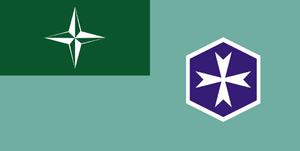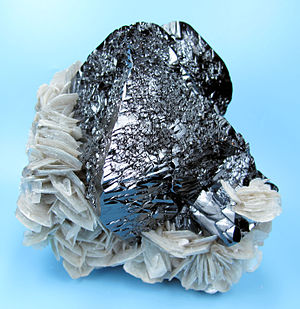Porfíria: Difference between revisions
m (Text replacement - "Sydona" to "Dysona") Tag: Reverted |
m (Text replacement - "Dysona" to "Sydona") Tag: Manual revert |
||
| Line 128: | Line 128: | ||
<strike>The majority of the territory's population is made up of indigenous Cronites. Most Cronites living within the boundaries of Porfíria belong to the Mannakee cultural and linguistic cluster dominant across northern Crona, the exceptions being three Tyohuxul-speaking tribes on the territory's southern frontier and one tribe on Rovaīon island of undetermined linguistic affinity. To date, twenty separate Cronite tribes have been identified and contacted in Porfíria. | <strike>The majority of the territory's population is made up of indigenous Cronites. Most Cronites living within the boundaries of Porfíria belong to the Mannakee cultural and linguistic cluster dominant across northern Crona, the exceptions being three Tyohuxul-speaking tribes on the territory's southern frontier and one tribe on Rovaīon island of undetermined linguistic affinity. To date, twenty separate Cronite tribes have been identified and contacted in Porfíria. | ||
No census has yet been conducted in the territory, but government estimates place the number of colonists in the territory around half a million. Ethnically, [[Ĥeiran Coscivians]] and Kiravian Celts comprise a plurality of the population, many of them coming from the rugged maritime and mountain regions of northern Great Kirav, the Talavéiscan colonies, and Cèuvara. [[Austral Coscivians]] from the [[ | No census has yet been conducted in the territory, but government estimates place the number of colonists in the territory around half a million. Ethnically, [[Ĥeiran Coscivians]] and Kiravian Celts comprise a plurality of the population, many of them coming from the rugged maritime and mountain regions of northern Great Kirav, the Talavéiscan colonies, and Cèuvara. [[Austral Coscivians]] from the [[Sydona Islands]] also have a major presence in the colony, as do Northern Coscivian groups (particularly the Ískem), Lúnstem, Sēoran Coscivians, Kaskem, and Saskem. Fishermen put out of work by the 21205 oil spill in the Strait of Rovaīon and small farmers from Northwestern Great Kirav make up a large share of Porfíria's settler population. | ||
Small numbers of Woolzi Arabs are known to live in the territory.</strike> | Small numbers of Woolzi Arabs are known to live in the territory.</strike> | ||
Revision as of 17:27, 30 April 2023
This page is currently undergoing major reconstruction in accordance with broader lore changes. |
| Axerka Porfíria Colony of Porfíria | |
 Flag | |
| Country | |
| Theme | |
| Capital | Vittēmur |
| Largest City | Krivôrok |
| Population | 6,586,000 |
| Governor | Rurovid H.H.M. Valerian |
| President | Adhrun Lavranmaxur |
| Stanora seats | 3 |
| Official languages | Kiravic |
| Other Languages | Mannaki, Ĥeiran Coscivian |
| Postal Abbreviation | PRF |
Porfíria is a Kiravian overseas colony located on the southern extreme of the Cusinaut subcontinent in northeastern Crona. The territory extends from the mainland coast opposite the island of Rovaīon into the Archangel River Valley, bordering New Harren to the east and the fellow Kiravian colonies of Avenirskara to the southwest and Térrurin to the northwest. Porfíria was first permanently settled by Kiravians in 1618 AD, when the fort and trading post of Vittēmur was established at the mouth of the Archangel River. The colony subsequently attracted many thousands of Kiravian settlers who built a local economy based on exploitation of its abundant natural resources.
History
Pre-Colonial
Colonisation
Sunderance
Post-Restoration
Geography
Most of Porfíria has an oceanic climate.

Major Settlements:
- Krivôrok (County Benderyn) - 101,240
- Inverporfír (County Archangel) - 86,615
- Saar-Macféden (County Macféden) - 60,850
- Vittēmur (County Archangel) - 22,386
- Sudhrun (County Louth) - 16,780
- Nív-Inoksensus (Northern County) - 3,594
- Krummavísur (Northern County) - 1,816
- Fort Èulet (Northern County) - 857
- Michael-Vicksburg (Unorganised County) -720
Economy



Although not as highly developed as its offshore neighbour Rovaīon, Porfíria has a growing and diversifying economy based on a strong primary sector - including agriculture, mining, and the harvesting of timber and fish - and supplemented by transportation, resource processing, and service industries.
The climate and terrain of Porfíria are quite similar to that of Great Kirav, and colonists have had great success cultivating Kiravian staple crops such as potato, cale, barley, and oats. Crops native to Cusinaut, such as sallaw and clubfruit, are also cultivated, both by the indigenous population and on settler-owned land. Livestock raising is an important activity, focused on sheep and guanacos introduced from Great Kirav. As a result of the distributist land tenure policies adopted during colonisation and their continuation in the colony's own property laws, most settler-held agricultural land is family-owned and organised into parcels ranging from medium-sized estates to small, single-family homesteads. Most native-held agricultural land is owned collectively, either by tribes and clans according to traditional customary law or by the governments of the autonomous Mannakidan territories. Forestry is also an important industry, and Porfíria is a rising producer of softwood timber, pine resins, and paper products.
Rich stocks of [types of fish] and shellfish such as [species] are found in the cold waters of the Northern Approaches and the wider North Levantine Ocean, and [species] is plentiful in the relatively unpolluted Archangel River.
Tourism is hoped to become a major source of income for the colony in the future, as Porfíria's breathtaking natural scenery, agreeable (for Kiravians) climate, and many opportunities for hunting and fishing promise to make it a prime destination for the popular Kiravian activities of skiīng and backlanding.
Politics and Governance
As a chartered territory, Porfíria is an integral part of the Kiravian Federacy for the purpose of constitutional law, and enjoys a level of self-governance more limited than that of a full state but greater than that of a dependency or federal district.
The highest executive authority in the territorial government is the Executive Council, which is chaired by the Governor and comprises 10-15 additional members. Most members of the Executive Council are appointed by the Governor, but two are elected by the citizenry, another two are elected by the Legislative Conference, and one is chosen from among the indigenous leaders of the territory. The Governor himself is appointed by the Prime Executive of the Kiravian Federacy. The Executive Council directs the colony's bureaucratic apparatus and government agencies, managing them on a day-to-day basis as well as charting short- and medium-term policy directions. Executive decisions are usually made collectively, but certain powers, such as commanding the territorial militia and declaring states of emergency, are exercised unilaterally by the Governor, and the Governor's signature is required to validate all executive orders originating from the Council.
The territorial legislature, the Legislative Conference, comprises 50 members elected by single transferable vote. It is non-partisan, as political parties are banned by Porfíria's territorial charter. The Legislative Conference has the power to pass statutes, levy territorial taxes, elect two members of the Executive Council, confirm judicial appointments made by the Governor, and rule on certain matters concerning real property by means of private bills.
Historically, Delegates elected to represent Porfíria in the Federal Stanora sat with that body's various agrarian, distributist, and pro-colonial factions. The Porfírian populace was overwhelmingly opposed to Kirosocialism, and voted strongly in support of the National Renewal Movement in 21166. In the post-Kirosocialist era, Porfírian Delegates have typically sat with the neoconservative wing of the Shaftonist-Republican Alliance caucus, or with the Coscivian National Congress, reflecting the vital importance of national defence issues to this frontier colony.
| Member | Party | First Elected | |
|---|---|---|---|
| Svíridur Vidhedran | Independent (CNC) | 21206 | |
| Angus MacKeldin | Independent (SRA) | 21206 | |
Society and Culture
[Statistical Demography]
Ethno-cultural Groups
Religion
Sports
Lacrosse is the most popular sport in Porfíria. The most popular professional sports league in Porfíria is the Northern Crona Lacrosse Association (NCLA), a league with fourteen teams across Porfíria and New Harren.
Porfíria and New Harren also share a professional soccer league, the sixteen team Cusinaut Football Associated League (CFAL).